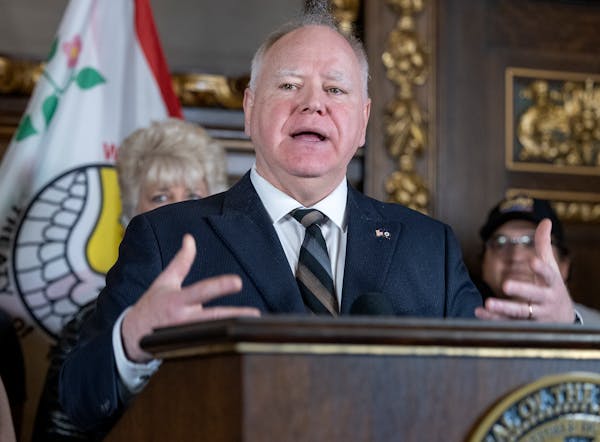Minnesota's top political leaders have struck the framework of a deal to cut $4 billion in taxes and spend an equal amount on things such as classrooms, public safety and health care.
They're also planning to leave $4 billion unspent to prepare for any potential economic downturn.
That's a lot of money, and the roughly $12 billion deal doesn't include an agreement lawmakers already struck earlier this year to replenish the state's unemployment insurance trust fund and send checks to frontline workers.
Here are answers to some common questions about how they plan to pay for it all:
How big is the state's budget surplus?
In February, state budget officials estimated Minnesota is nearly $9.3 billion in the black for the current two-year budgeting period, which ends next summer. That is all extra money lawmakers can spend however they see fit.
What if the economy suddenly starts to tank?
The state's budget routinely comes in over or under projections from economists. Those projections are released twice a year, in February and November. If the economy takes a sudden downturn by the fall, next year's Legislature will grapple with any shortfalls.
How much have they spent out of the surplus so far this year?
Legislators have already committed billions of dollars to two major deals struck before leaders reached this latest global agreement.
First, they approved $891 million to extend the state's so-called reinsurance program — spread out over the next three years — which will help keep premiums down on the state's individual health insurance marketplace.
Then in April, they also agreed to spend $500 million on bonus checks for frontline workers and $2.7 billion to replenish the state's unemployment insurance trust fund, which was drained by historic levels of requests during the pandemic. They also gave Gov. Tim Walz $191 million to help him continue the administration's response to COVID-19.
Did federal COVID relief funding cover any of that?
Yes. Lawmakers carried over more than $1 billion in federal funds from the American Rescue Plan Act last session, which they used to help cover the cost of the deal on unemployment insurance benefits and frontline worker pay.
With all of that factored in, legislators estimate they still have roughly $7.1 billion of the nearly $9.3 billion surplus to spend.
But that's not enough money to cover this new deal. How do they pay for the rest?
The booming economy continues to produce more revenues than expected, and state officials are projecting a $6 billion surplus for the 2024-2025 budgeting period as well. Part of that extra money was already used to cover the deal on reinsurance and other items, leaving roughly $5 billion on the bottom line for the next two-year budget.
Walz and legislative leaders are tapping into both surpluses to make the math of their deal work.
So is this deal is spread out over several years?
Yes, the broad framework would cut taxes and increase spending over a three-year period.
For 2023, the first year covered under the deal, leaders agreed to use $1.6 billion for new spending initiatives and another $1.6 billion for tax cuts out of the current budget surplus.
That leaves $3.9 billion on the bottom line, which carries forward into 2024-2025. Over those two years, they've agreed to use an equal $2.4 billion for new spending and $2.4 billion to cut taxes. When all is said and done, they're leaving $4 billion unspent, which a future legislature can use for cushion if the economy takes a sharp downward turn.
With so much money on the bottom line, why are they borrowing to pay for a bonding bill?
The agreement includes a $1.4 billion package of construction projects. The state finances those projects by selling bonds, a form of debt that the state promises to repay over a specific period of time.
Legislators could pay for these projects with extra money on the bottom line, but historically they've preferred to take advantage of low interest rates to borrow and pay the money back over many years. The deal does use a small amount of the surplus — $150 million — to pay for construction projects.
